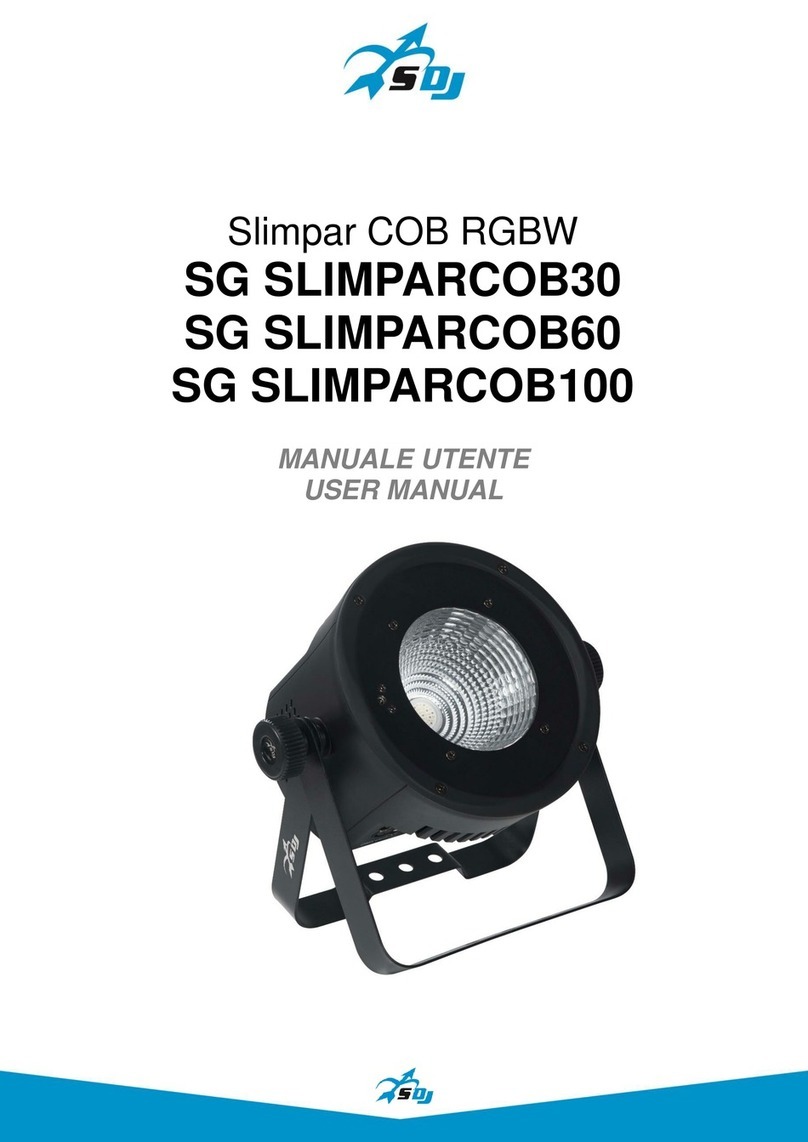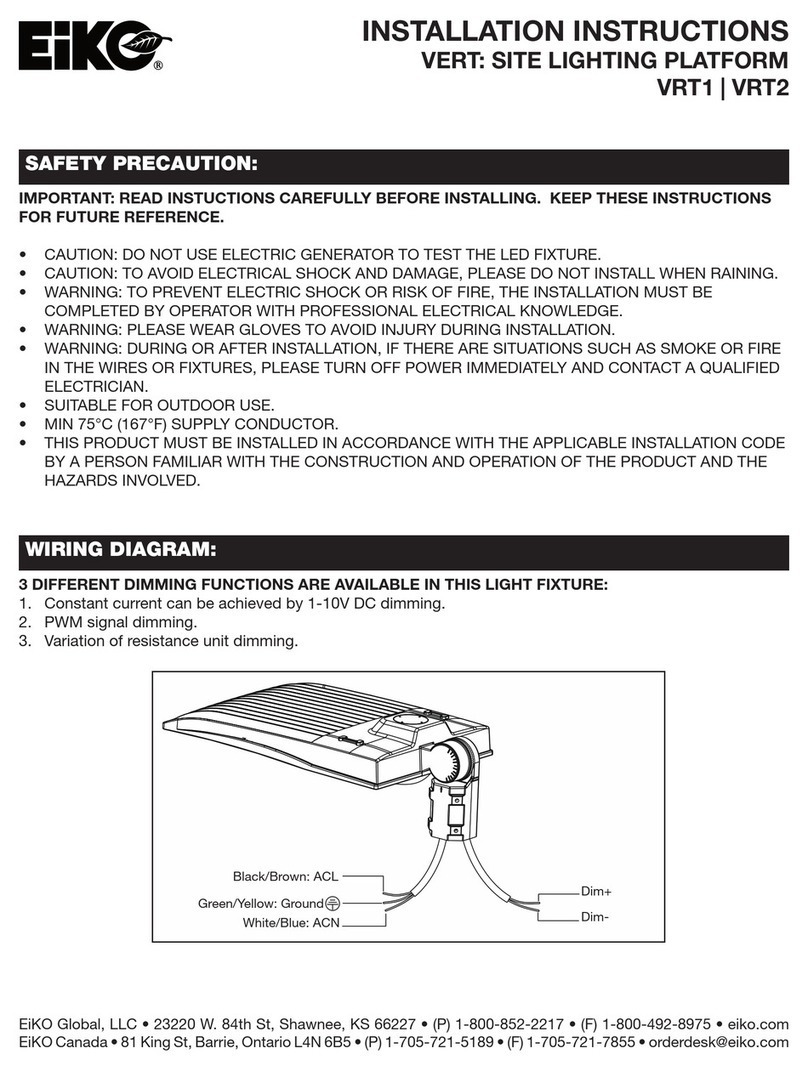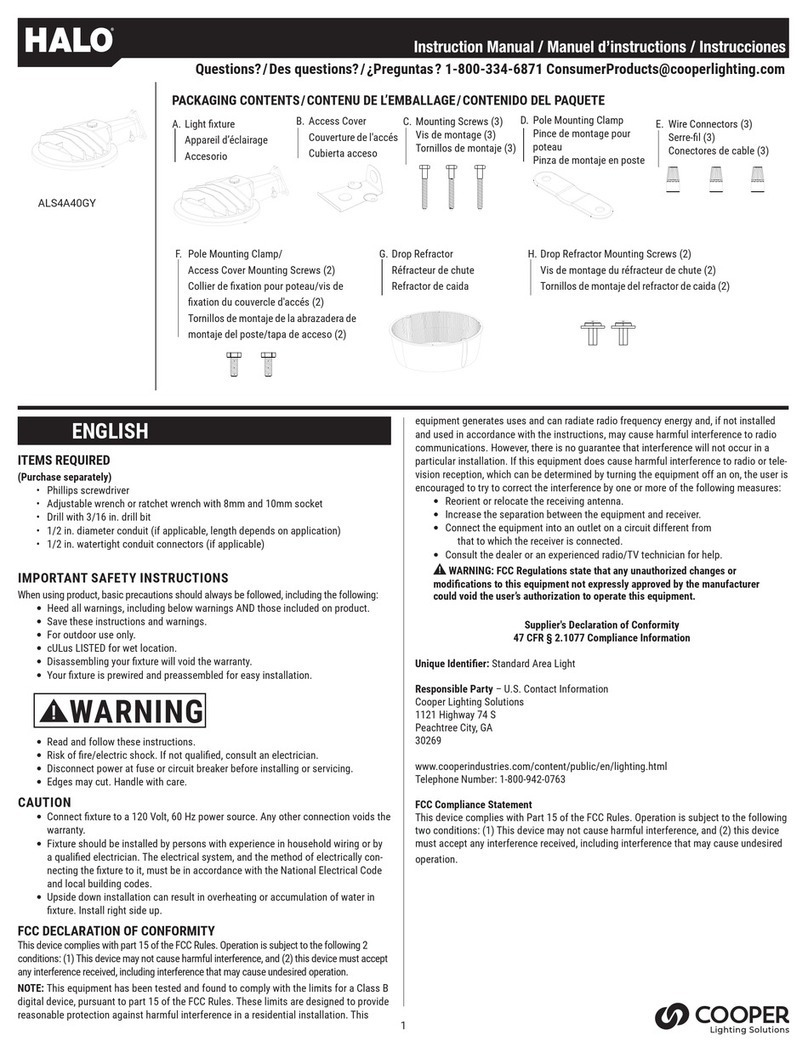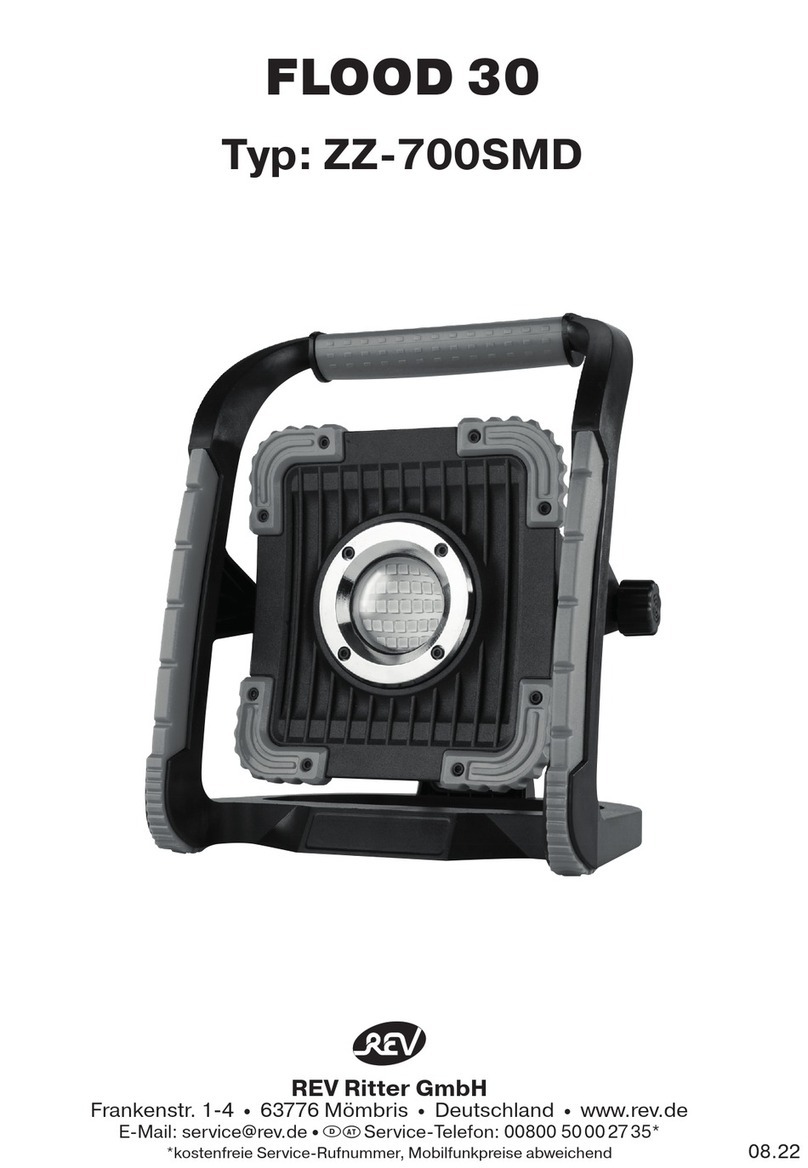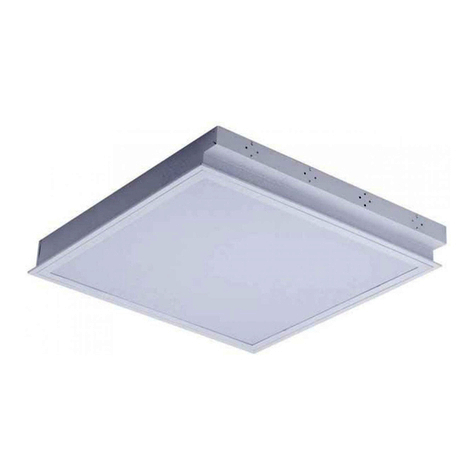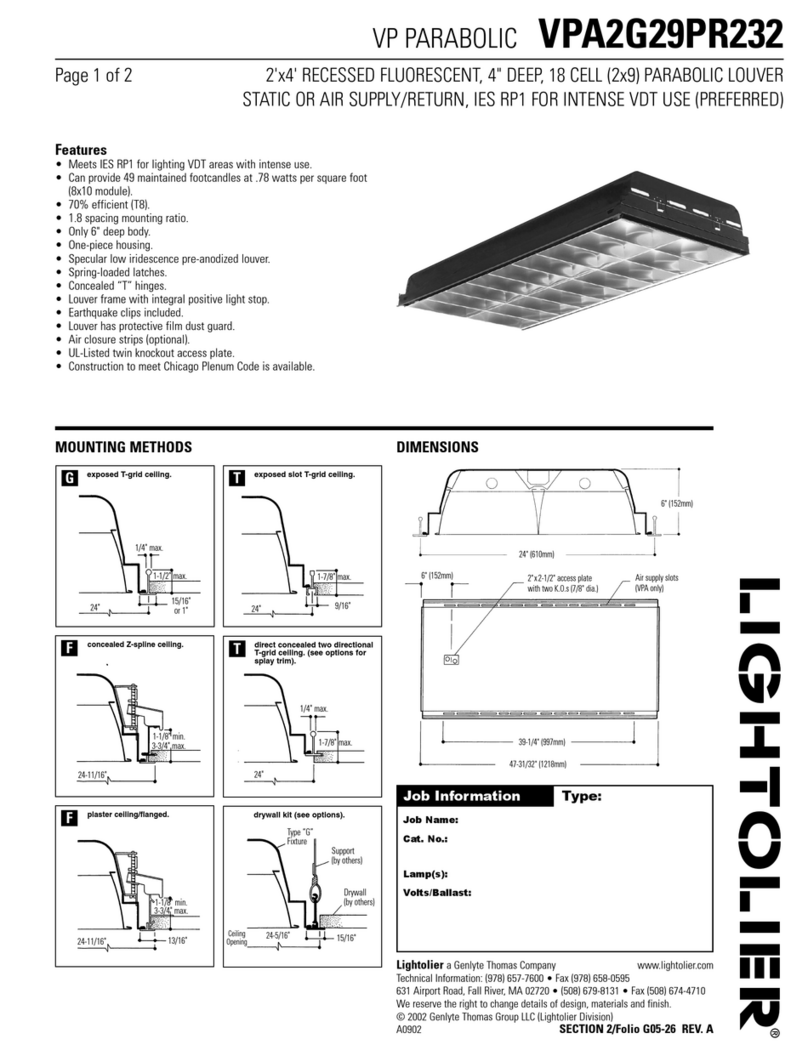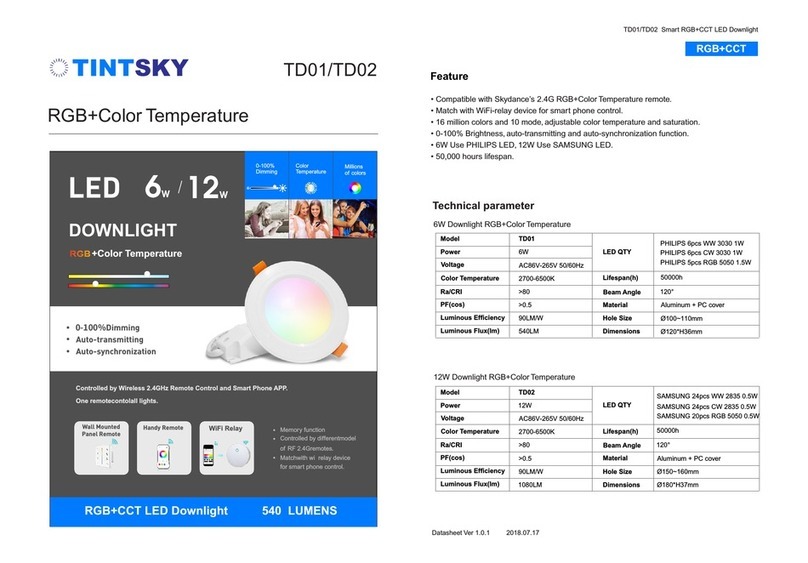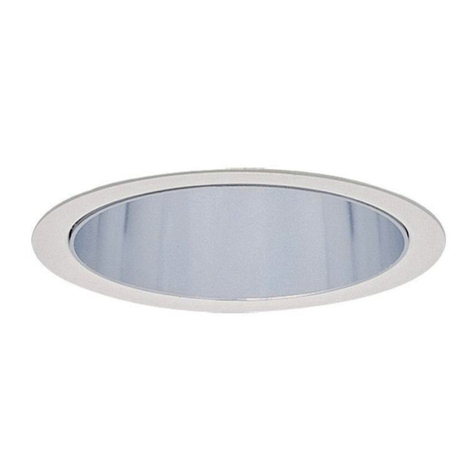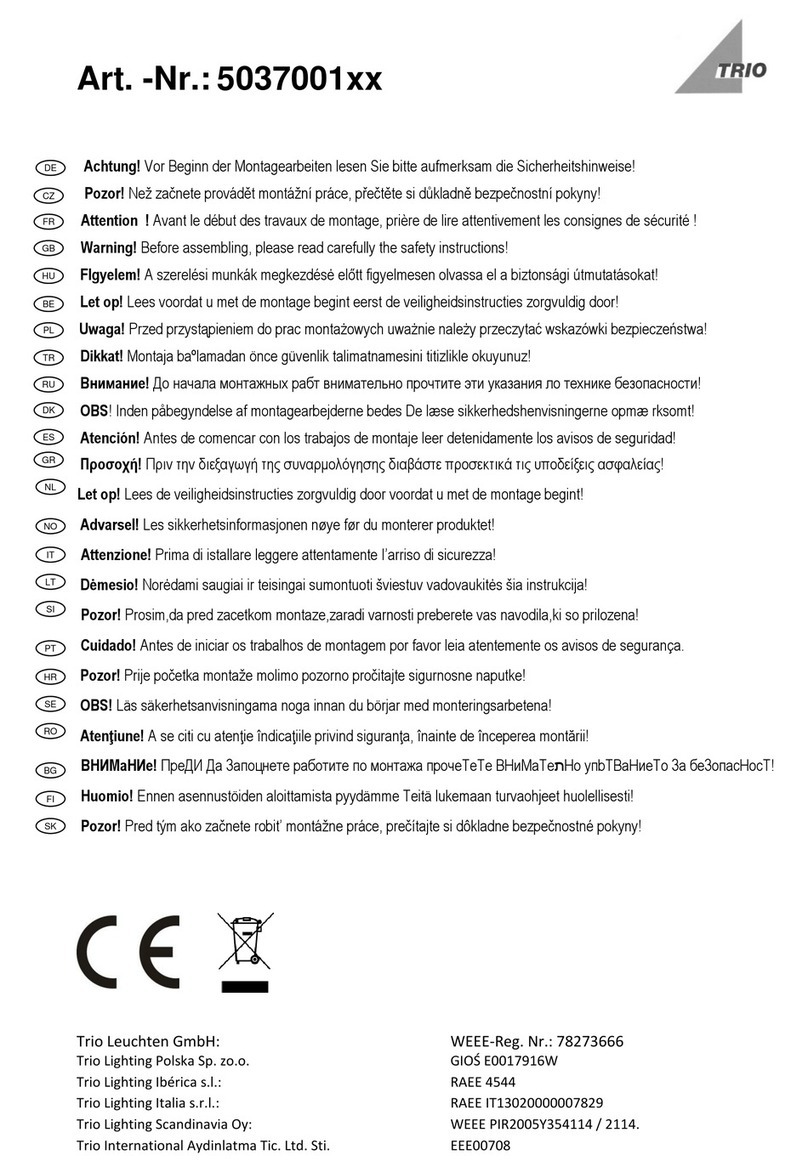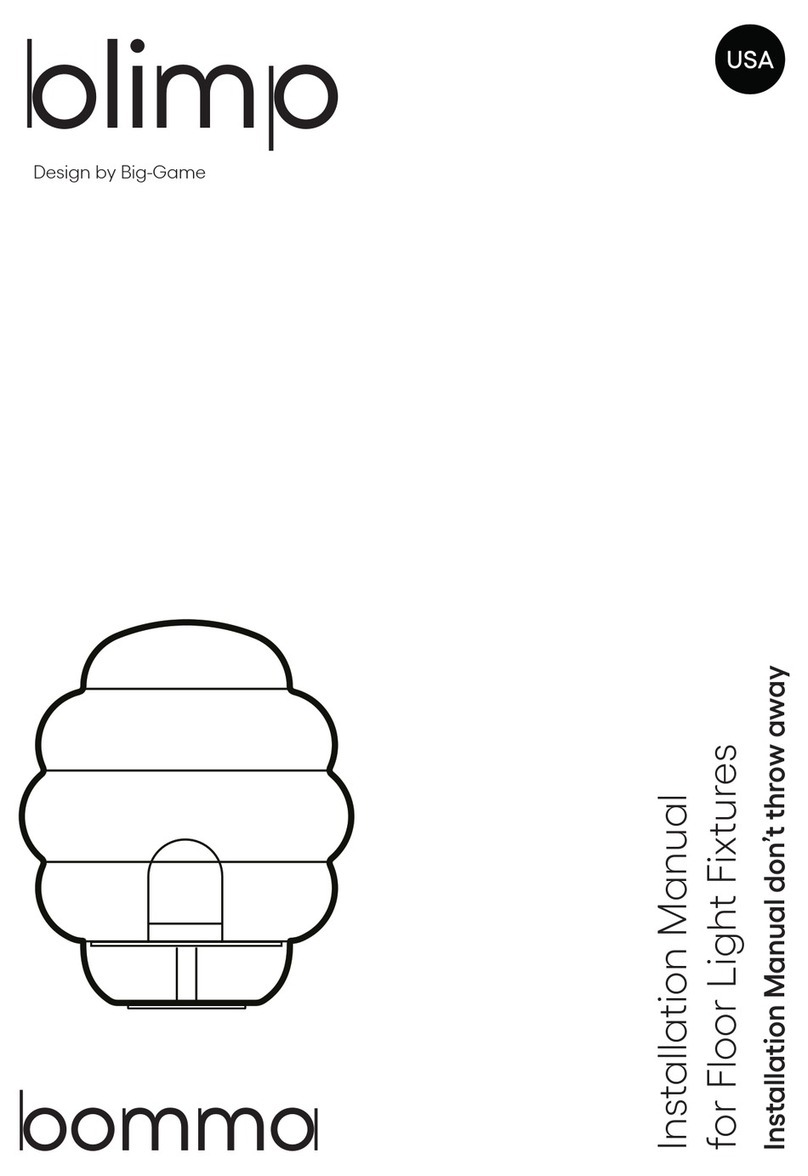Evolights iQ-150S User manual

iQ-150S
INSTRUKCJA OBSŁUGI
USER MANUAL

ENGLISH
1. Product Introduction:
1.1 Before unpack the fixture, pls make sure that the packing is in good condition, following items will be found in the
box:
‐The fixture
‐This users guide
‐3m DMX cable
‐1.5m power cable with powercon
‐Omega bracket for hanging installation
‐Safety chain
1.2 Specification
Source
Light source: Advanced 150w white led
Led life: 60.000 hours
Luminous Flux: 4031lumen, 18600lux@3m
Control: Remote on/off via DMX+RDM
Ballast: switching mode power
supply Optical System
Beam angle:9° to 15°
X/Y
Pan: 630° (4.0 sec) or 540°(3.58 sec), Tilt: 265° (2.8 sec)
16‐bit resolution
Auto repositioning
Colors
8+open, interchangeable, indexable and bidirectional rainbow effect
New color bounce effect
Gobos
Outside ¢23mm, inside ¢18mm
7+ open custom interchangeable position for rotating gobo wheel
Real indexable and gobo shaking
Distinctive gobo animation effect
Features
DMX channels: 11/14
Color wheel: 8+1 colors
Rotating gobo wheel: 7+1 gobos
Motorized focus
Manual zoom from 13° to 18°
Full range 0‐100% dimmer
Various strobe
3 facets prism
Software upgrade via DMX
Hibernation when lost DMX for preset time
Fan speed auto change according to
temperature Display
LED display
Flip
2

Back‐up communicating IC
1.3 Description of the Device
1. Project lens
2. Head
3. Arm
4. Base
5. Display
6. Foot stand
7. Operation button
8. Handle
9. Mic
10. MODE/ESC button
11. Down button
12. Up buttom
13. Enter button
14. Powercon in
15. Powercon out
16. Fuse
17. 3‐pin DMX out
18. 3‐pin DMX in
3

1.4 Colors and Gobos
1
Open
2
Red
3
Blue
4
Green
5
Yellow
6
Pink
7
Sky blue
8
Orange
9
Magenta
Rotating gobo wheel (slot‐in‐out gobos)
4

2. Safety and maintenance Information
2.1 Safety Info
Before operate this unit, please carefully read this users guide and keep if needed in future. It’s
necessary to respect following rules.
The disposal of the device after lifecycle could damage the environment, need to take it to special
company for recycling or return to authorized dealer.
The products referred to in this manual conform to the European Community Directives and are
therefore marked with CE logo.
Keep this device away from children and unauthorized users, the manufacturer will not take
responsibility for the damage due to any disregard of the information provided in this manual and
wrong operation.
Before operate the device, pls make sure the fixture is in good housing, ensure pan and tilt can rotate
in its complete range.
‐‐0.5m
Pls make sure minimal 0.5m distance need to kept between the fixture to any flammable material.
The device can only run with 100‐240v voltage, 50/60Hz power, don’t connect to any other wrong
power. Disconnect the device from main power before open the shield or maintenance.
The device is designed only for indoor usage, pls keep it away from moisture. Do not expose
the device under the sun or directly to any other lighting source.
Never look directly into the projecting lens when the fixture is power on, the light may trigger
epileptic seizures in photosensitive persons or persons with epilepsy. Especially at beam effect,
extreme caution and observance of these safety instructions is mandatory.
Don’t put or install the device on a surface that subject to vibration or bumps.
Ta=45℃
The device is supposed to work in the temperate range ‐15° C and +45° C, do not use the device
when the temperate exceed this range.
The lens, shield need to be replaced when obviously broken, never use the device when the shield is
not completed closed.
Safety I class device, need to be earth connected.
When the fixture is hanged overhead, the safety rope must be fixed to the bottom of the device to
the appropriate fixing point.
Always carry the device by the handles, do not take the head or arm directly for transportation.
2.2 Maintenance
2.2.1 Operation only allowed to qualified person, damages due to unprofessional operation or remove of any parts
inside will not be considered in warranty service. There are no serviceable parts inside the device or package, service
only leaves to authorized dealers.
2.2.3 Never allow the optical components contact with oil, fat or any other liquid.
2.2.4 A regular clearance of the device is needed for long‐term usage, this is very helpful to maintain the lifetime and
brightness need to use a soft and lint‐free cloth to clean the optical system, fan and air flowing tunnel.
5

2.2.5. Trouble Shooting
Problems
Possible reasons
Checking or solutions
Device not power up
Powercon or power cable damaged
Change a good power cable to try
Faulty power supply
Replace new power supply
Pan/Tilt error or vibrate
Faulty Pan/Tilt PCB
Replace MO007 PCB
Faulty opto sensor
Replace opto sensor MO007
Cable loosen
Check the cable connect to MO007
LED off
Temperature protection
Check the temperature from menu
Fan not working
Check the fan speed info from menu
Faulty LED
Replace new LED
Dimmer and strobe set at 0
Set dimmer and strobe channel at 255
Faulty power supply
Replace new power supply
Device not response to DMX
Faulty communication IC
Replace the IC with back‐up one in the display PCB
Faulty display PCB
Replace new display PCB
Wrong DMX addressing
Check the address and setting
Faulty DMX cable
Change to a good DMX cable
2.2.6 Replacement of the fuse
Need to replace with same type and rating, which originally installed in the device.
Step One: Unplug power cable from main power.
Step Two: Unscrew the fuse holder out of the housing with a screwdriver.
Step Three: Remove the broken fuse and replace with an exact same type of new fuse.
Step Four: Insert the fuse holder back to the housing and screw tight and reconnect power.
3. Installation
3.1 The device could be either put on a solid and
even Surface, or mounted upside down or sideways
like left picture.
3.2 The mounting place must be sufficient stable
and be able to support a weight of 10 times of the
unit’s weight. When the fixture is hanged, always
additionally secure the device with the safety chain;
fasten the safety rope at a suitable position so that
the maximum fall of the projector will be 20 cm
6

3.3 How to do mounting installation.
Step one: Installation the clamp onto the omega bracket;
Step two: Install the clamp and bracket on the bottom of panel, fasten the quick‐locks;
Step three: Install the whole device onto appropriate truss and fasten the clamps, tight the safety rope with the truss or
other fixing point at a suitable position that drop down distance not exceed 20 cm.
4. Control menu
4.1 Meaning of the icon in menu
CONNECT
LIGHT
INFOMATION
SET
PROGRAM
4.2 Menu tree
Default setting shadowed. Mark with
①can be basic reloaded, ②be program reloaded,
③can be private reloaded.
DMX Addr①
XXX
DMX address setting
Slave Rece
Choose Slave mode
Connect
Sequence
Alone/Master
Choose Sequence
mode
Music
Alone/Master
Choose Sound mode
Max Temp①
60~139℃/140~282℉(85℃)
Lamp off if
temperature
Light
continuously over for 5
minutes
Lamp Adjust①
PAN……
Adjust value of each
channels
Informatio
Lamp Temp
XXXC
Temperature of driver
n
Set
Rest
Reset
7

Movment
Pan Reverse①
ON/OFF
Pan Reverse
Tilt Reverse①Enco
ON/OFF
Tilt Reverse
Pan Degree①
630/540
Choose Pan Degree
Encoders①
ON/OFF
Encoder wheel on/off
Move Mode①
Stand/Smooth
Choose pan/tilt mode
UI Set
Mic Sens. ③
0~99%(60%)
Sensitivity of Mic
No Signal①
Close/Hold/Auto/Music
Mode when no signal
Temper. C/F①
Fahrenheit
/Celsius
Temperature at ℃/℉
Fans Mode①
Auto/High
Fans mode
Hibernation①
OFF,01M‐99M(15M)
Sleeping mode
Backlight①
OFF,01~99m(02m)
Show backlight time
Flip Display①
ON/OFF
Display 180°reverse
Users
Standard/Basic
Users mode
Calibration③
‐Password‐
=XXX
Password: 050
Pan
=XXX
Calibrate channel value
:
:
Fixture ID③
Name
Name
Rdm Mode
Rdm Mode
‐Password‐
Password: 050
PID Code
Set PID of RDM
Software V
IC Version
Relosd Default
Basic Reload(①)
Basic Reload
‐Password‐
Password: 050
All Reload
All Reload
5. DMX connection and DMX protocol
5.1 DMX addressing:
5.1.1 The device is controlled by universal DMX 512 protocol, DMX address is the start channel used to receive
instructions from the external controller. For independent control, each fixture must be assigned its unique address
control channels. For example, this device has four channel modes: 11/14, if we set the mode at standard 11 channels
mode, and there are several models need to be independently controlled, we just simply address first fixture at 1, and
second fixture at 12, third one at33, etc.
If the devices have the same address, they will behave synchronically.
DMX addressing is limited, don’t set the address so high that without enough control channels for the fixtures.
Display is flashing when no DMX signal is received.
5.1.2 This device is equipped with 3‐pins DMX in and out sockets only.
Pin 1 = GND
Pin 2 = Signal (‐)
Pin 3 = Signal (+)
8

5.1.3 The termination is prepared by soldering a 120Ωresistor between pins 2 and 3.
5.1.4 Connection: us DMX cable with 3‐pin XLR‐plugs to connect the controller with the fixture or one fixture with
another.
5.2 DMX chart
Channel
name
function
Min DMX
Max DMX
St
Ba
1
1
Pan
Pan Coarse
0
255
2
Pan fine
Pan Fine
0
255
3
2
Tilt
Tilt Coarse
0
255
4
Tilt fine
Tilt Fine
0
255
5
3
Movment
fastest to Slowest
0
247
Speed
Shutter closed
0
31
No function (shutter open)
32
63
Strobe effect slow to fast
64
95
6
4
Shutter
No function (shutter open)
96
127
Pulse‐effect in sequences
128
159
No function (shutter open)
160
191
Random strobe effect slow to fast
192
223
No function (shutter open)
224
255
7
5
Dimmer
Dimmer(Close to Open)
0
255
Indexed
Position 1 (Open)
0
2
8
6
Color
Position 2 ~ Position 18
3
53
Indexed With Backout
Position 1 (Open)
54
56
9

Position 2 ~ Position 18
57
106
Indexed With Bounce
Position 1
107
119
Position 2 ~ Position 10
120
223
Forward Wheel Spin
Stop to fastest
224
239
Reverse Wheel Spin
Stop to fastest
240
255
Indexed
Position 1 (Open)
0
5
Position 2 ~ Position8
6
47
Indexed With Backout
Position 1 (Open)
48
53
Position 2 ~ Position8
54
95
9
7
Rot Gobo
Indexed With Shake
Position 2
98
115
Position 3 ~ Position8
116
223
Forward Wheel Spin
Stop to fastest
224
239
Reverse Wheel Spin
Stop to fastest
240
255
Continuous
Positioning from 0‐360 degrees
0
191
Forward Animate Rotate
Stop to fastest
192
207
10
8
Gobo Rot
Reverse Animate Rotate
Stop to fastest
208
223
Forward Spin
Stop to fastest
224
239
Reverse Spin
Stop to fastest
240
255
Prism
Position 1 (Open)
0
3
Prism &
Prism Rot Forward Spin
11
9
Stop to fastest
4
127
Prism Rot
Prism Rot Reverse Spin
Stop
128
131
Stop to fastest
132
255
12
10
Focus
Continuous
Focus In to Focus Out
0
255
Normal
0
7
Reset All
8
15
13
11
Control
Pan&Tilt Reset
16
23
Color Reset
24
31
Gobo Reset
32
39
TBD
40
47
10

Other Reset
48
55
Display Off
56
63
Display On
64
71
TBD
72
87
Hibernation
88
95
TBD
96
255
6. Unique Features
6.1 RDM, stand for “Remote Device Management”, with this function, users can realize remote control of the device,
such as remotely changing DMX address, reverse pan/tilt setting, check a lot of useful information such as temperature,
power consumption, fan speed. Etc. Every single device has a unique RDM code before left factory to distinguish from
each other, usually not suggest users change this code freely.
6.2 Software upgrade function via DMX cable, if there is any new firmware for this device come out, it can be upgraded
simply via a software upgrade box, no need to change any mechanical parts. The upgrade box is not included in the
package, if need any further assistance pls just contact authorized dealers.
6.3 Hibernation, the device will enter sleeping mode if activated after a period of disconnecting DMX signal to save the
power consumption, and will return immediately as soon as the DMX signal is sent again.
6.4 Display back‐up communication IC, there is a back‐up communication IC installed in the display PCB, so users could
replace at once if the working one is broken, no need to wait long time from service.
6.5 Display flip, by press up and down button for more than 3 seconds, the display will flip automatically, this function
is useful to read menu conveniently when device is hanged.
8. Dimensions Drawing
11

9. Technical specification
Power supply
100-240 V AC, 50/60 Hz ~
Power consumption
160W
LED
Advanced 150w white led
DMX channels
11/14 modes
Beam angle
9° to 15°
Luminous flux
4031lumen, 18600lux@3m
Fuse
T 3.15 A, 250 V
Device dimensions
299x252x431mm
Net Weight
10KG

POLSKI
1. Wprowadzenie:
1.1 Przed rozpakowaniem urządzenia prosimy o upewnienie się, że opakowanie jest nie uszkodzone i zawiera następujące
elementy:
-urządzenie
-instrukcja obsługi
-przewód zasilający PowerCon 1,5m
-uchwyt omega do instalacji
-linka bezpieczeństwa
1.2 Specyfikacja
Źródło
Źródło światła: Biała dioda LED 150W
Żywotność diody: 60.000 godzin
Strumień świetlny: 4031lumen, 18600lux@3m
System optyczny
Kąt świecenia: 9° do 15°
Ruchy X/Y
Pan: 630° (4.0 sek) or 540°(3.58 sek), Tilt: 265° (2.8 sek)
16‐bit
Auto repozycja
Kolory
8+open, indeksowalne z efektem tęczy
Efekt color bounce
Gobo
Średnica zewnętrzna ¢23mm, wewnętrzna ¢18mm
7+ open z dwukierunkową rotacją
Indeksowanie i gobo shake
Efekt animacji gobo
Cechy
Kanały DMX: 11/14
Koło kolorów: 8+1
Koło rotacyjnych gobo: 7+1
Zmotoryzowany focus
Ręczny zoom w zakresie 13° do 18°
Pełnozakresowy dimmer 0‐100%
Stroboskop o różnej częstotliwości
3 ramienna pryzma
Update oprogramowania przez DMX
Hibernacja w razie utracenia adresu DMX
Wentylator regulowany temperaturą
Wyświetlacz LED
Odwrócenie wyświetlacza
2

1.3 Opis urządzenia
1. Soczewki
2. Głowica
3. Ramię
4. Podstawa
5. Wyświetlacz
6. Nóżki
7. Przyciski operacyjne
8. Uchwyt
9. Mikrofon
10. Przycisk MODE/ESC
11. Przycisk Down
12. Przycisk Up
13. Przycisk Enter
14. Wejście zasilania
15. Wyjście zasilania
16. Bezpiecznik
17. Wyjście DMX
18. Wejście DMX
3

1.4 Kolory i gobo
1
Open
2
Czerwony
3
Niebieski
4
Zielony
5
Żółty
6
Różowy
7
Jasny niebieski
8
Pomarańczowy
9
Magenta
Rotacyjne gobo
4

2. Informacje konserwacji i bezpieczeństwa
2.1 Informacje bezpieczeństwa
Przed użyciem prosimy o szczegółowe zapoznanie się z tą instrukcją obsługi. Prosimy również o zachowanie jej na
przyszłość. Jest ona niezbędna w przestrzeganiu zawartej w niej zasad.
Wyrzucenie urządzenia po zużyciu może być szkodliwe dla środowiska, należy więc oddać urządzenie do specjalnej
placówki recyklingowej.
Produkty opisane w tej instrukcji są zgodne z dyrektywami europejskimi, dlatego są oznaczone znakiem CE.
Urządzenie należy trzymać z dala od dzieci i nie wykwalifikowanych osób. Producent nie ponosi odpowiedzialności
za szkody spowodowane nieprawidłowym użytkowaniem.
Przed użyciem upewnij się, że obudowa nie jest uszkodzona, a ruchy pan i tilt wykonywane są w pełnym zakresie.
--0.5m
Zapewnij minimum 0,5m dystansu pomiędzy urządzeniem a materiałami łatwopalnymi.
Urządzenie pracuje na zasilaniu 100-240V, 50/60Hz nie należy podłączać do prądu o innych parametrach. Odłącz
urządzenie z zasilania przed zdjęciem obudowy lub konserwacją.
Urządzenie wewnętrzne, trzymać z dala od wilgoci. Nie należy narażać produktu na bezpośrednie działanie słońca,
lub innych urządzeń oświetleniowych.
Nie należy patrzeć bezpośrednio w soczewkę, światło może wywołać atak epileptyczny u osób światłoczułych lub
osób z epilepsją. Przestrzeganie tej zasady jest obowiązkowe.
Nie należy instalować urządzenia na podłożu skłonnym do wibracji lub podskoków.
Ta=45℃
Urządzenie przeznaczone do pracy w temperaturze od -15°C do +45°C, nie należy go stosować gdy temperatura
otoczenia wykracza poza ten zakres.
Soczewka i filtry muszą być wymienione w przypadku pęknięcia.
Urządzenie 1. klasy bezpieczeństwa, należy zastosować uziemienie.
Kiedy urządzenie jest zawieszone, należy zamocować linkę bezpieczeństwa do odpowiedniego punktu
montażowego.
Zawsze przenoś urządzenie trzymając za uchwyty. Nie należy transportować produktu trzymając za ramię lub
korpus.
2.2 Konserwacja
2.2.1 Urządzenie może użytkować tylko wykwalifikowany personel, szkody spowodowane użytkowaniem niezgodnym z
przeznaczeniem, lub próbą samodzielnej naprawy nie podlegają gwarancji. Wewnątrz nie ma żadnych części serwisowych, naprawy
mogą być wykonywane wyłącznie przez autoryzowany punkt serwisowy.
2.2.3 Nie pozwól aby elementy optyczne weszły w kontakt z olejem, tłuszczem lub jakimkolwiek podobnym płynem.
2.2.4 Regularne czyszczenie umożliwia długotrwałe użytkowanie oraz pozwala na zachowanie odpowiedniej jasności. Do czyszczenia
używaj miękkiej szmatki, czyść system optyczny, wentylatory oraz otwory wentylacyjne.
2.2.5. Rozwiązywanie problemów
Problem
Prawdopodobna przyczyna
Sugerowane działanie
Urządzenie się nie włącza
Uszkodzony przewód lub wtyczka
Uszkodzony zasilacz
Spróbuj użyć innego przewodu
Wymień zasilacz
Błąd lub wibracja Pan/Tilt
Uszkodzona płytka Pan/Tilt
Uszkodzony opto sensor
Poluzowany przewód
Wymień płytkę MO007
Wymień czujnik MO007
Sprawdź połączenie MO007
Wyłączona lampa
Ochrona temperaturowa
Nie działa wentylator
Uszkodzona lampa
Dimmer i przesłona ustawiona na 0
Uszkodzony zasilacz
Sprawdź temperaturę w menu
Sprawdź prędkość wentylatora w menu
Wymień lampę
Zmień ustawienia dimmera i przesłony na 255
Wymień zasilacz
Brak reakcji na sygnał DMX
Uszkodzony chip komunikacji
Uszkodzona płytka wyświetlacza
Błędny adres DMX
Uszkodzony przewód DMX
Wymień chip na zapasowy na PCB wyświetlacza
Wymień płytkę wyświetlacza
Sprawdź adres DMX i ustawienia
Zmień przewód DMX

2.2.6 Wymiana bezpiecznika
Bezpiecznik należy wymienić na drugi o identycznych parametrach.
Krok 1: Odłącz przewód zasilający.
Krok 2: Odkręć pokrywę bezpiecznika śrubokrętem.
Krok 3: Wyjmij uszkodzony bezpiecznik i zamień go na drugi o takich samych parametrach.
Krok 4: Przykręć pokrywę bezpiecznika i podłącz zasilanie.
3. Instalacja
3.1 Urządzenie może być umiejscowione na płaskiej powierzchni,
zamontowane do góry nogami na rampie lub bokiem, jak na
załączonym obrazku.
3.2 Miejsce instalacji musi być stabilne i mieć możliwość
utrzymania dziesięciokrotności wagi urządzenia. Przy
podwieszaniu zawsze dodatkowo zabezpiecz instalację linką
bezpieczeństwa, w odpowiedniej pozycji, tak by maksymalne
opuszczenie urządzenia wynosiło 20cm.
3.3 Instrukcja instalacji.
Krok 1: Przymocuj hak do uchwytu omega;
Krok 2: Zamontuj uchwyt na podstawie urządzenia za pomocą zamków szybkiego montażu;
Krok 3: Zaczep urządzenie na odpowiedniej kratownicy i zapnij hak. Zamocuj linkę bezpieczeństwa.

4. Menu kontroli
4. Menu kontroli
4.1 Oznaczenie ikon na wyświetlaczu
Połączenia
Światło
Informacje
Ustawienia
Program
4.2 Struktura menu
Ustawienia fabryczne zaznaczone na szaro. Z oznaczeniem ① mogą być przywrócone jako podstawowe, ②przywrócone
programowo, ③przywrócone jako prywatne.
DMX Addr①
XXX
Ustawienie adresu DMX
Slave Rece
Wybór trybu Slave
Connect
Sequence
Alone/Master
Wybór trybu sekwencji
Music
Alone/Master
Wybór trybu sound
Max Temp①
60~139℃/140~282℉(85℃)
Dioda się wyłączy
jeśli temperatura będzie
Light
się utrzymywać przez
5 minut
Lamp Adjust①
PAN……
Regulacja wartości
każdego z kanałów
Informatio
Lamp Temp
XXXC
Temperatura drivera
n
Set
Rest
Reset
7

Movment
Pan Reverse①
ON/OFF
Odwrócenie Pan
Tilt Reverse①Enco
ON/OFF
Odwrócenie Tilt
Pan Degree①
630/540
Wybór zakresu Pan
Encoders①
ON/OFF
Koło koderów on/off
Move Mode①
Stand/Smooth
Wybór trybu
UI Set
Mic Sens. ③
0~99%(60%)
Czułość mikrofonu
No Signal①
Close/Hold/Auto/Music
Tryb przy braku sygnału
Temper. C/F①
Fahrenheit
/Celsius
Temperatura w ℃/℉
Fans Mode①
Auto/High
Tryb wentylatora
Hibernation①
OFF,01M‐99M(15M)
Uśpienie
Backlight①
OFF,01~99m(02m)
Czas podświetlenia
Flip Display①
ON/OFF
Odwrócenie wyświetlacz
Users
Standard/Basic
Tryb użytkownika
Calibration③
‐Password‐
=XXX
Hasło: 050
Pan
=XXX
Kalibracja wartości
:
:
kanału
Fixture ID③
Name
Nazwa
Rdm Mode
Tryb Rdm
‐Password‐
Hasło: 050
PID Code
Ustawienie PID dla RDM
Software V
Wersja IC
Relosd Default
Basic Reload(①)
Podstawowe
przywracanie
‐Password‐
Hasło: 050
All Reload
Całkowite przywracanie
5. Adresowanie i połączenia DMX
5.1 Adresowanie DMX:
5.1.1 Urządzenie jest kontrolowane przez standardowy protokół DMX512, wykonując polecania przesłane przez kontroler.
Urządzenie posiada dwa tryby DMX: 11/14CH, standardowym trybem jest 14-kanałowy.
W momencie ustawienia tego samego adresu na dwóch urządzeniach będą one działały synchronicznie.
Wyświetlacz miga w momencie braku sygnału DMX.
5.1.2 Urządzenie jest wyposażone w wejścia i wyjścia 3pin DMX.
Pin 1 = uziemienie
Pin 2 = Sygnał (-)
Pin 3 = Sygnał (+)
5.1.3 Dla zmniejszenia ryzyka zniekształcenia sygnału można zastosować terminator DMX.

5.1.4 Połączenia: urządzenia łączymy szeregowo przewodem DMX, a następnie do sterownika.
5.2 Struktura DMX
Kanał
Nazwa
Funkcja
Zakres min
Zakres max
St
Ba
1
1
Pan
Pan
0
255
2
Pan fine
Pan Fine
0
255
3
2
Tilt
Tilt
0
255
4
Tilt fine
Tilt Fine
0
255
5
3
Szybkość
Szybko-wolno
0
247
Ruchów
Zamknięcie
0
31
Brak funkcji (przesłona otwarta)
32
63
Stroboskop wolno-szybko
64
95
6
4
Przesłona
Brak funkcji (przesłona otwarta)
96
127
Efekt pulsacji w sekwencjach
128
159
Brak funkcji (przesłona otwarta)
160
191
Losowy stroboskop
192
223
Brak funkcji (przesłona otwarta)
224
255
7
5
Dimmer
Dimmer (0-100%)
0
255
Wybór koloru
Pozycja 1 (Open)
0
2
8
6
Kolory
Pozycja 2 ~ Pozycja 18
3
53
Indeksowanie w blackout
Pozycja 1 (Open)
54
56
9
Table of contents
Languages:
Popular Light Fixture manuals by other brands

Lightmybricks
Lightmybricks The Louvre LED Lighting Kit manual
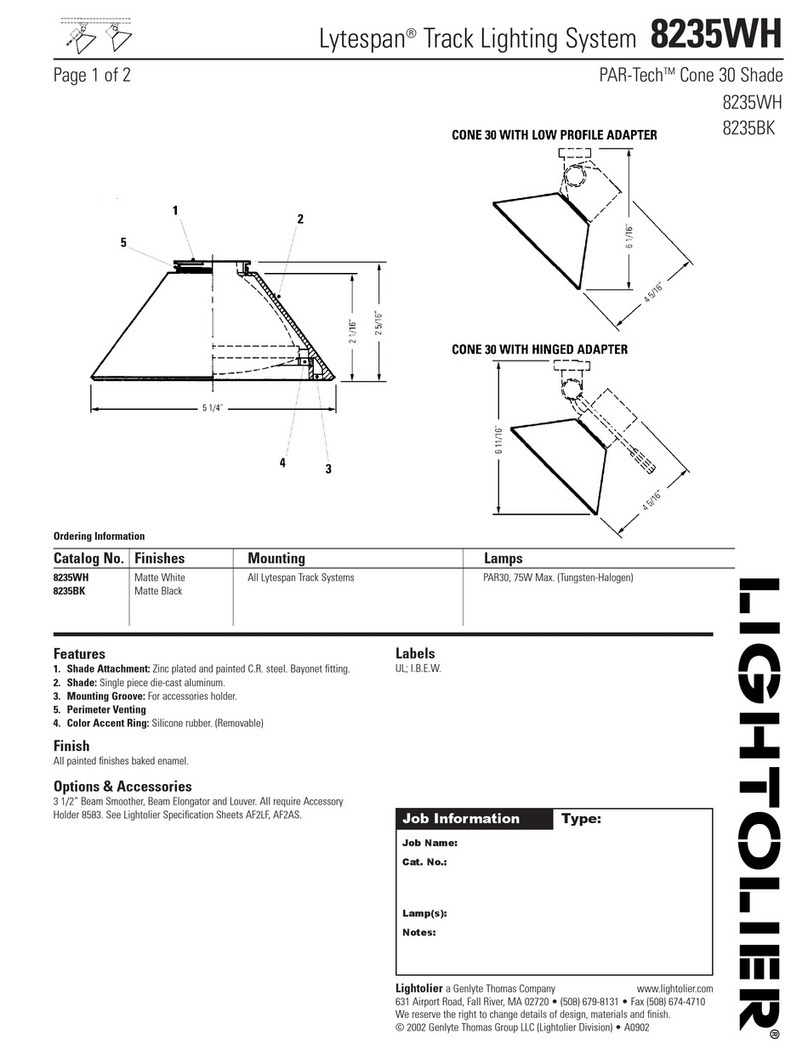
Lightolier
Lightolier Lytespan 8235WH specification
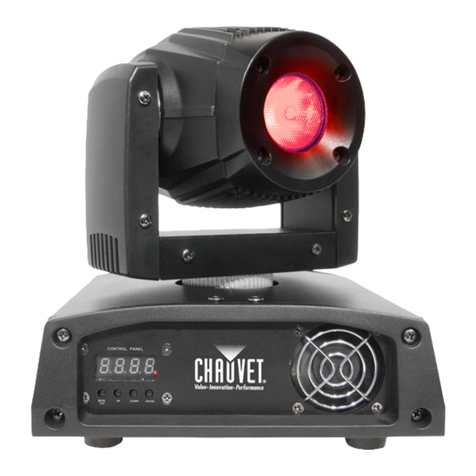
Chauvet
Chauvet Intimidator COLOR LED user manual
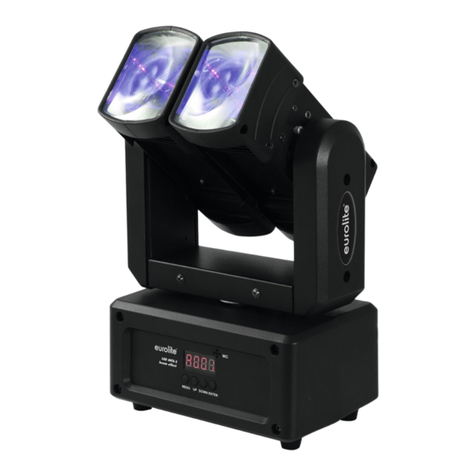
EuroLite
EuroLite LED MFX-2 Beam effect user manual
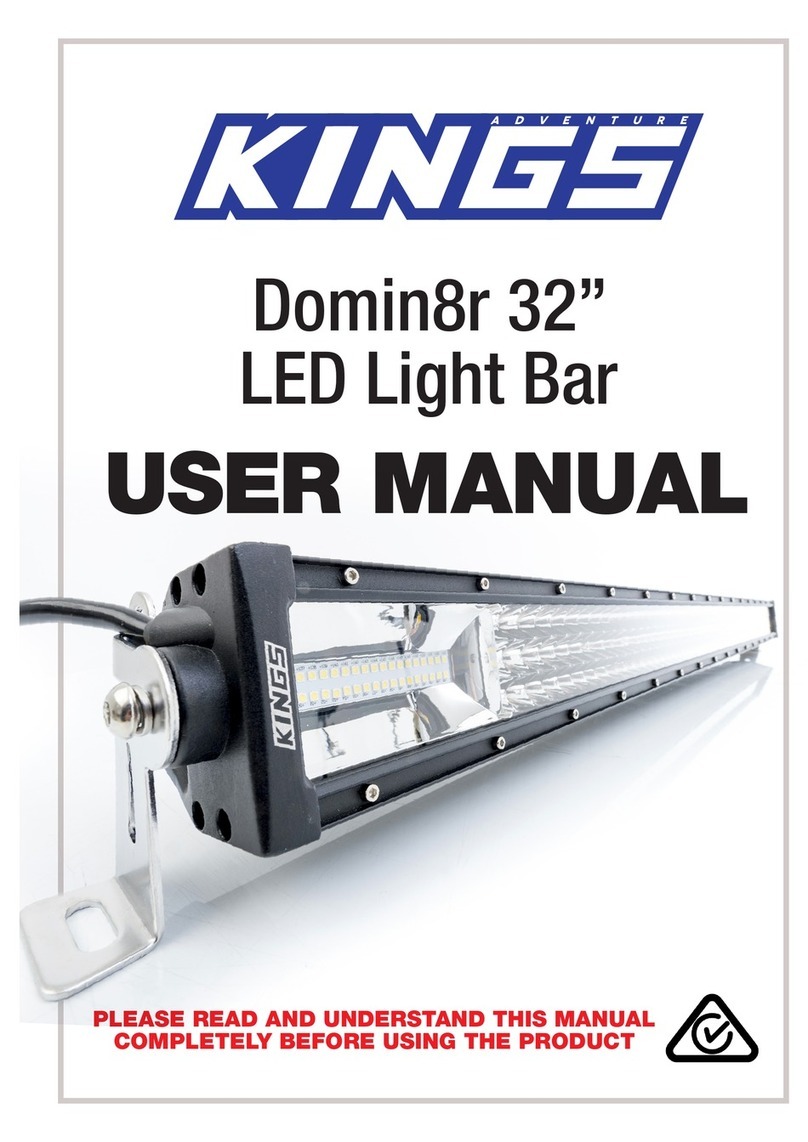
Kings Adventure
Kings Adventure domin8r 32'' user manual
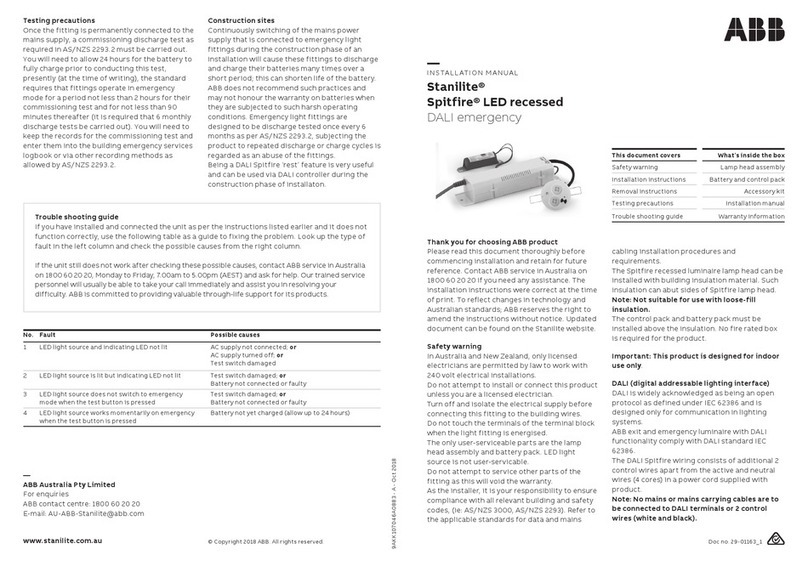
ABB
ABB Stanilite installation manual
